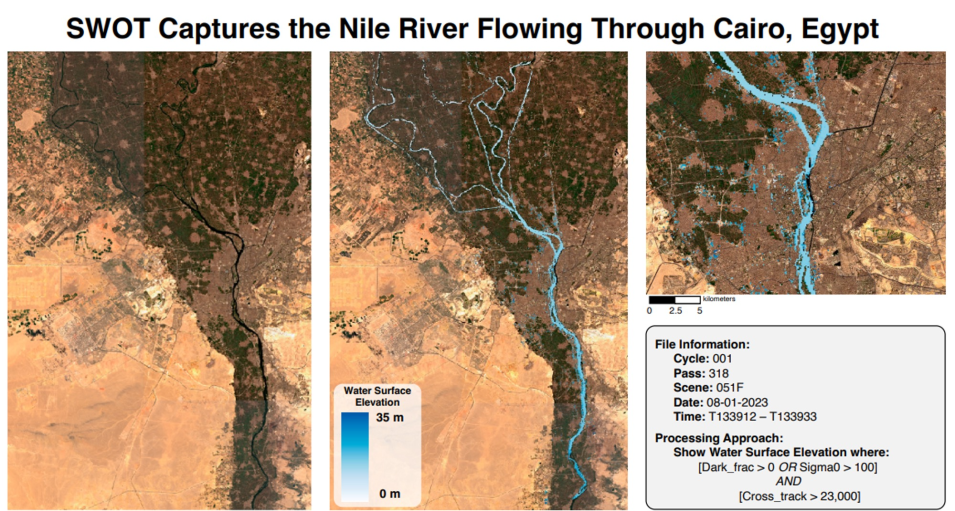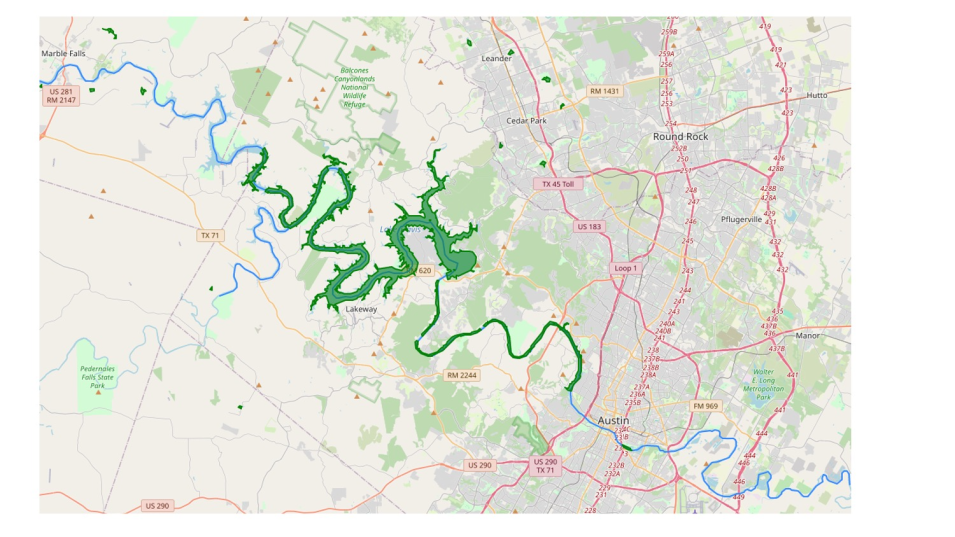NASA’s Physical Oceanography Distributed Active Archive Center (PO.DAAC) hosted a half-day SWOT Data Access Workshop in February 2024 as part of the American Geophysical Union (AGU) Chapman: Remote Sensing of the Water Cycle Conference. The Surface Water and Ocean Topography (SWOT) satellite, a joint NASA/CNES (Centre National d'Etudes Spatiales) venture, with contributions from CSA (the Canadian Space Agency) and the United Kingdom Space Agency, provides unprecedented measurements of global surface water extents and elevations for hydrologic science and applications. Using SWOT data products, scientists can derive how fast rivers are flowing and how rapidly the storage in lakes and reservoirs is changing—all from the vantage point of space.
The 36 workshop attendees dove into information about the SWOT mission, were guided through live demonstrations on how to access and apply mission hydrology data, and received demonstrations of newly developed SWOT-specific tools. The agenda also allowed time for discussions and participant questions.
During the workshop's first hour, Dr. Cédric David, a NASA Jet Propulsion Laboratory (JPL) scientist, provided an overview of the motivation behind SWOT and shared captivating SWOT images from his research team, such as the ribbon of the Nile River flowing through Cairo, Egypt. This was followed by an overview of hydrology-applicable SWOT data products by Dr. Cassandra Nickles, a JPL applied science system engineer and a PO.DAAC team member. The hour concluded with Dr. Catalina Taglialatela, a JPL applied science system engineer and lead of the PO.DAAC applied science system engineering team, providing an overview of PO.DAAC as the NASA host of SWOT data followed by a brief tour of data search and discovery using NASA Earthdata Search.

